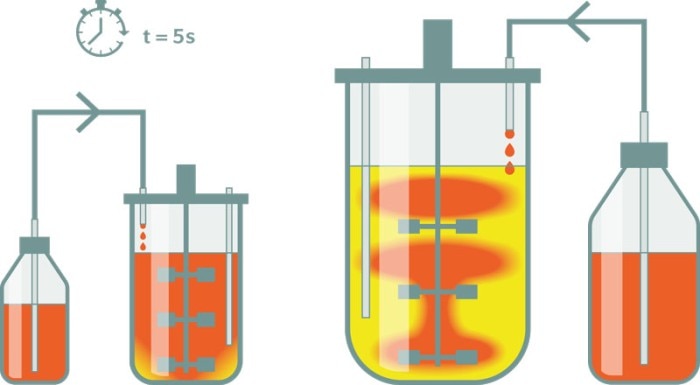メニュー
JP | JPY
-
-
-
- Challenges and Chances: A Review of the 1st Stem Cell Community Day
- Summertime, and the Livin’ Is Easy…
- Follow-on-Biologics – More than Simple Generics
- Bacteria Versus Body Cells: A 1:1 Tie
- Behind the Crime Scene: How Biological Traces Can Help to Convict Offenders
- Every 3 Seconds Someone in the World Is Affected by Alzheimer's
- HIV – It’s Still Not Under Control…
- How Many Will Be Convicted This Time?
- Malaria – the Battle is Not Lost
- Physicians on Standby: The Annual Flu Season Can Be Serious
- At the Forefront in Fighting Cancer
- Molecular Motors: Think Small and yet Smaller Again…
- Liquid Biopsy: Novel Methods May Ease Cancer Detection and Therapy
- They Are Invisible, Sneaky and Disgusting – But Today It’s Their Special Day!
- How Many Cells Are in Your Body? Probably More Than You Think!
- What You Need to Know about Antibiotic Resistance – Findings, Facts and Good Intentions
- Why Do Old Men Have Big Ears?
- The Condemned Live Longer: A Potential Paradigm Shift in Genetics
- From Research to Commerce
- Chronobiology – How the Cold Seasons Influence Our Biorhythms
- Taskforce Microbots: Targeted Treatment from Inside the Body
- Eyes on Cancer Therapy
-
-
-
-
-
- Challenges and Chances: A Review of the 1st Stem Cell Community Day
- Summertime, and the Livin’ Is Easy…
- Follow-on-Biologics – More than Simple Generics
- Bacteria Versus Body Cells: A 1:1 Tie
- Behind the Crime Scene: How Biological Traces Can Help to Convict Offenders
- Every 3 Seconds Someone in the World Is Affected by Alzheimer's
- HIV – It’s Still Not Under Control…
- How Many Will Be Convicted This Time?
- Malaria – the Battle is Not Lost
- Physicians on Standby: The Annual Flu Season Can Be Serious
- At the Forefront in Fighting Cancer
- Molecular Motors: Think Small and yet Smaller Again…
- Liquid Biopsy: Novel Methods May Ease Cancer Detection and Therapy
- They Are Invisible, Sneaky and Disgusting – But Today It’s Their Special Day!
- How Many Cells Are in Your Body? Probably More Than You Think!
- What You Need to Know about Antibiotic Resistance – Findings, Facts and Good Intentions
- Why Do Old Men Have Big Ears?
- The Condemned Live Longer: A Potential Paradigm Shift in Genetics
- From Research to Commerce
- Chronobiology – How the Cold Seasons Influence Our Biorhythms
- Taskforce Microbots: Targeted Treatment from Inside the Body
- Eyes on Cancer Therapy
-
-
JP | JPY
Sorry, we couldn't find anything on our website containing your search term.

Beaker or swimming pool: Why microbes dislike big vessels
Lab Academy
- バイオプロセス
- バイオテクノロジー
- 微生物学
- スケーラビリティ
- バイオプロセス
- エッセー
Biotechnological production processes use microbes with exceptional capabilities. Among others, they originate from soil, digestive system, plant surface or water. In the lab, the habitat of the microorganism is a stirred vessel with a volume of 0.5-20 L called bioreactor. Controlling (and monitoring) all environmental conditions in the reactor accurately transforms it into a land of milk and honey - at least for the microbes: plenty of nutrients, feel-good temperature and sufficient (breathing) air.
A guest contribution by E. Zelle, M. Oldiges und W. Wiechert from the Research Center Jülich
A first step to identify the high-performers among the microorganisms is to screen, investigate, and train them in lab-scale. This selection procedure results in first potential candidates. However, we cannot be sure that they perform adequately in a large-scale production process. To ensure their suitability, it is necessary to expand the cultivation scale – for products with huge manufacturing output (e.g. amino acids, antibiotics, or enzymes) even tremendously. Industrial bioreactors for production provide approx. 500 cubic meters of space, which is approximately a typical 25 m long swimming pool. Naively we could assume that the microbes do not care whether they live in a beaker or the swimming pool, meaning a small or big reactor. Sadly mistaken! We know from experience that for the majority of microbial production strains the up-scaling performance can be considerably different from its lab scale output – sometimes with catastrophic breakdown. This leads to enormous commercial risks during bioprocess development. How can the approximately 2-10 micrometer sized creatures notice where they are hosted? Unfortunately, the environmental conditions in the industrial bioreactor are not as constant as in the lab scale. The level of oxygen varies for different bioreactor regions and the nutrient supply is better described by “intermittent fasting at random”. Unfortunately, there is no economical technical solution to this dilemma, because mixing 500,000 liters of liquid with a stirrer is a Herculean task. Here, engineers are reaching their technical limits.
A first step to identify the high-performers among the microorganisms is to screen, investigate, and train them in lab-scale. This selection procedure results in first potential candidates. However, we cannot be sure that they perform adequately in a large-scale production process. To ensure their suitability, it is necessary to expand the cultivation scale – for products with huge manufacturing output (e.g. amino acids, antibiotics, or enzymes) even tremendously. Industrial bioreactors for production provide approx. 500 cubic meters of space, which is approximately a typical 25 m long swimming pool. Naively we could assume that the microbes do not care whether they live in a beaker or the swimming pool, meaning a small or big reactor. Sadly mistaken! We know from experience that for the majority of microbial production strains the up-scaling performance can be considerably different from its lab scale output – sometimes with catastrophic breakdown. This leads to enormous commercial risks during bioprocess development. How can the approximately 2-10 micrometer sized creatures notice where they are hosted? Unfortunately, the environmental conditions in the industrial bioreactor are not as constant as in the lab scale. The level of oxygen varies for different bioreactor regions and the nutrient supply is better described by “intermittent fasting at random”. Unfortunately, there is no economical technical solution to this dilemma, because mixing 500,000 liters of liquid with a stirrer is a Herculean task. Here, engineers are reaching their technical limits.
もっと読む
表示を減らす

Gradients form more easily at large scale than at small scale
But what causes the aversion of the microbes to these environmental ups and downs - bioprocess engineers call them inhomogeneity – they face during their journey through the reactor? We can exclude for sure that acceleration forces harm the cell, as most of the microbes withstand mechanical stress very well. Another effect more probably is the origin of the problem: in the natural habitat, each change of external conditions has an essential meaning. For example, nutrient shortage requires a diet strategy or building up stocks to survive the bad times. Likewise, each change of environmental conditions could be a signal causing adjustment processes inside the cell. That way, via a complex network of control loops new metabolic pathways must be activated, while others are shut down. The drawback is the high resource cost connected with such adjustments, which lower the capacity of the microorganisms concerning manufacturing the desired product.
So what can be done to make process scale-up easier and more predictable and to pick the best microbes for them? The Jülich biotechnologists pursue this question and use an amazingly simple approach. The microorganisms are obviously doing far too well in a standard laboratory bioreactor. By modifying the laboratory reactors in such a way that the microbes experience the “rollercoaster” conditions of the production bioreactors here, i.e. producing inhomogeneities on a laboratory scale, we can check directly which microorganisms can cope with them. The scientists call this approach scale-down simulation. Exposing the microbes to the changing conditions in short cycles is like sending them to a biotechnological training camp for microbes.
In this way the Jülich scientists have learned that the soil bacterium Corynebacterium glutamicum reacts very good-naturedly with regard to scale-up. You can even turn off breathing air for several minutes without activating the alarm systems and taking counter measures. That could be a key to success and one of the reasons why C. glutamicum is used today as an all-round talent for the worldwide production of 6 million tons of glutamate (flavor enhancer) and lysine (feed additive) every year.
By bringing the rollercoaster conditions of production reactors into the laboratory, the Jülich biotechnologists, thus, can better predict the performance of microbes under production conditions and make the development of new bioprocesses and products more predictable. Expanding the cultivation scale therefore comes as no surprise!
So what can be done to make process scale-up easier and more predictable and to pick the best microbes for them? The Jülich biotechnologists pursue this question and use an amazingly simple approach. The microorganisms are obviously doing far too well in a standard laboratory bioreactor. By modifying the laboratory reactors in such a way that the microbes experience the “rollercoaster” conditions of the production bioreactors here, i.e. producing inhomogeneities on a laboratory scale, we can check directly which microorganisms can cope with them. The scientists call this approach scale-down simulation. Exposing the microbes to the changing conditions in short cycles is like sending them to a biotechnological training camp for microbes.
In this way the Jülich scientists have learned that the soil bacterium Corynebacterium glutamicum reacts very good-naturedly with regard to scale-up. You can even turn off breathing air for several minutes without activating the alarm systems and taking counter measures. That could be a key to success and one of the reasons why C. glutamicum is used today as an all-round talent for the worldwide production of 6 million tons of glutamate (flavor enhancer) and lysine (feed additive) every year.
By bringing the rollercoaster conditions of production reactors into the laboratory, the Jülich biotechnologists, thus, can better predict the performance of microbes under production conditions and make the development of new bioprocesses and products more predictable. Expanding the cultivation scale therefore comes as no surprise!
もっと読む
表示を減らす
